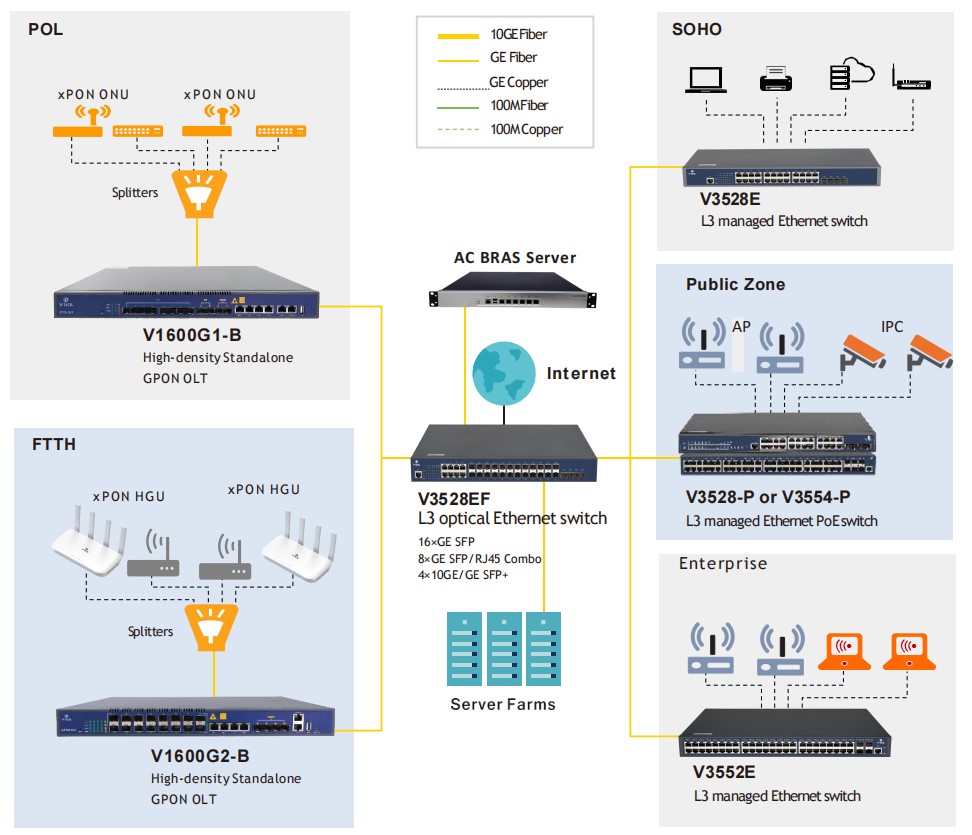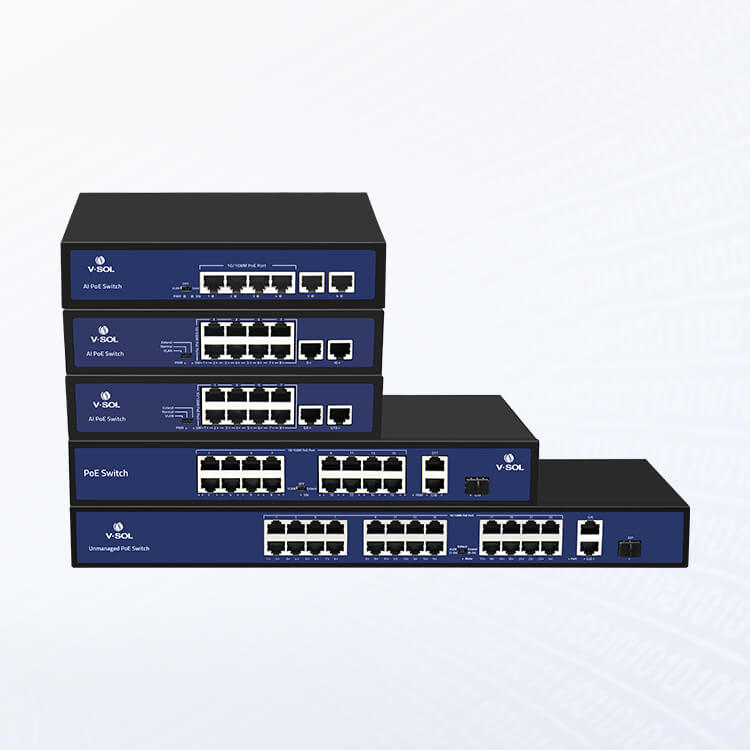Managed vs Unmanaged Switch, Which one to Choose?
Nowadays, the network switch can be classified into the managed switch and unmanaged switch. Whether individual or organization may be confused about which kind of switch should choose. Generally, managed switch is more powerful than the unmanaged switch. It's said that managed switch would be the mainstream in futural development. However, the unmanaged switch also takes up a considerable market in some industries and fields such as electric, coal, and transportation. Thus, what's the difference between managed and unmanaged switch and which one should you choose?
![]() Page Contents:
Page Contents:
2. What is Unmanaged Switch?
3. Difference between Managed and Unmanaged Switch
4. Should you choose managed switch or unmanaged switch?
5. Related Product: V-SOL Managed and Unmanaged Switch
Part I. What is Managed Switch?
The main task of the managed switch is to maintain all network resources in good. It provides many network management methods based on the terminal control port, web management, network management software, etc. Therefore, network management personnel can monitor the working status and operating situation locally or remotely. The working status and modes of all switching ports can be managed. The data of managed switch will achieve the configuration through SNMP. SNMP is the used most widely network management protocol based on TCP/IP, which can filter the address, port, protocol type, and service of the data.
Features of the managed switch with full control and monitoring include:
● It's capable of optimizing the performance of devices and applications on the network through Quality of Service (QoS), which contributes to prioritizing traffic and grouping device types using common services.
Part II. What is Unmanaged Switch?
Unmanaged switch don't handle the data directly. It belongs to devices of data link layer that can identify the MAC address of the data packet, transfer based on the MAC address and then record the MAC address and its corresponding ports on the inner address table. An advantage of the unmanaged switch is Plug and Play.
Features of unmanaged with low-cost basic connections include:
Part III. Managed vs Unmanaged Switch, what's the difference?
The main distinction between managed and unmanaged switch is the method. The managed switch provides network managers with control, managing LAN traffic and confirming its priority. However, unmanaged switch is just Plug and Play. It allows devices of the LAN to communicate with each other without users' interference.
1. Performance
Unmanaged switch is easy to use with a fixed configuration, which means the network can't be changed. Therefore, it's always adopted in small companies or start-ups. But managed switch allows managing, configuring and monitoring LAN. Moreover, the redundancy of managed switch helps copy and restore the data when the device and network break down.
2. Security
The unmanaged switch has the basic security feature such as protecting the device from manipulation with the lockable port cover. However, managed switch is equipped with superior security funcitons. It can monitor and control the network to shut down activity threads, protect data, and control and manage plans.
3. Cost
It's obvious that unmanaged switch is cheaper than managed switch. Besides, the price is also different according to the different numbers of the ports.
4. Application
Generally, unmanaged switch should be chosen when it comes to small networks such as the network in the small enterprise, families, single offices, etc. As for the managed switch, it would be more suitable for enterprises with large-range network or those using data center that needs better controlling the traffic of the network.
Part IV. Should you choose managed switch or unmanaged switch?
The selection of managed switch depends on many factors. You'd better inquire professional techicist or network manager. In general, you can think of following questions when purchasing.
Unmanaged switch is most common in small and simple networks such as the connections only involve a dozen devices. Besides, there is no requirement for security and control. Compared with unmanaged switch, managed switch is more flexible and multifunctional. It's often used in large enterprises, governments, universities, and healthcare organizations.
Part V. Related Product: V-SOL Managed and Unmanaged Switch
1. Layer 3 Managed Switch
V-SOL provides a series of managed switches supporting different functions to meet users' different demands. The switches have different numbers of GE(Gigabit Ethernet) ports or 10GE ports. If you need to apply the switches in public zones, enterprises or highways, you also can choose the Ethernet switch supporting PoE. For example, the V-SOL 48GE-port managed switch V3554-P can supply power to IP cameras, IP phones, wireless AP, etc. This Layer 3 switch can work as an aggregation layer switch and connects to the server, managing all devices and data.

2. Layer 2 Unmanged Switch
Similar to the managed switch, V-SOL Layer 2 unmanaged switch has three series of switches. These switches can be classified into Layer 2 unmanaged PoE switch and non-PoE switch. They adopt high-quality network chips and stable POE chips, which can be widely used in Ethernet access scenarios such as small and medium-sized enterprises, Internet cafes, hotels, and schools.

In conclusion, you should measure the real demands when selecting managed and unmanaged switches. What else would like to learn about switch? Comment below to let us know!